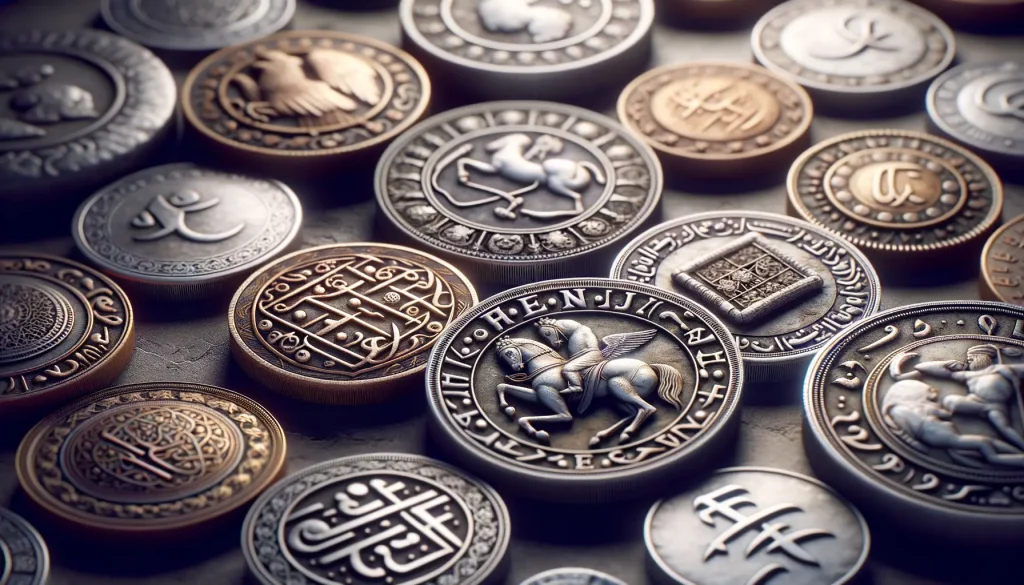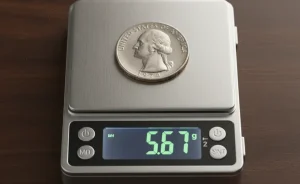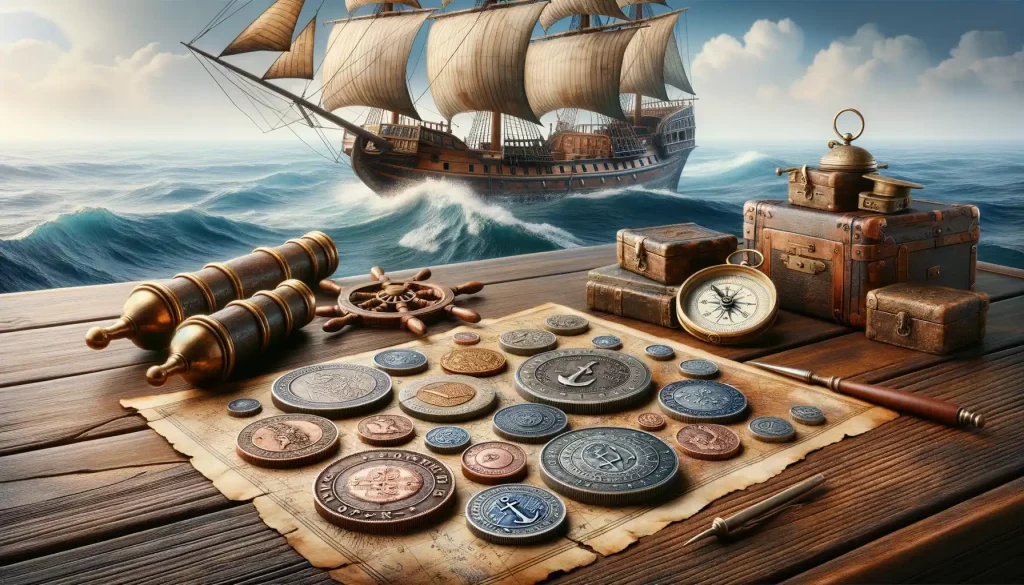Historical Significance of Coins as Political Tools
Coins have always been more than just metal discs jingling in your pocket. They’re silent witnesses to history, carrying messages meant to shape the minds of entire nations. Imagine holding a coin that once passed through the hands of an emperor, a soldier, or a merchant—it’s not just money; it’s a piece of political strategy.
The Power Play Hidden in Your Hand
Throughout history, rulers and governments have used coins as miniature billboards to assert authority and promote loyalty. Why? Because currency is everywhere—it moves from hand to hand, crosses borders, and reaches every layer of society. By stamping their images or symbols onto coins, leaders reminded people daily who held the power. Julius Caesar, for instance, was one of the first Roman leaders to put his own face on coins, effectively crowning himself with public recognition.
- Alexander the Great: Coins with his image spread his legacy across his vast empire.
- Elizabeth I: Her shrewd portraits on English currency reinforced her image as a powerful, divine ruler.
- Napoleon Bonaparte: His coinage celebrated military victories and imperial authority.
More Than Money: A Cultural Time Capsule
But here’s the thing: coins didn’t just brag about power. They told stories, too—stories of conquests, divine favor, and national pride. Ancient Greek coins showcased gods and goddesses, tying rulers to divine power. Medieval coins often displayed religious icons, blending faith with fealty. Even during revolutions, new coins screamed change by erasing old regimes and introducing bold, radical designs.
Holding one of these coins today feels like touching history itself—a small yet mighty beacon from the past.
Symbolism and Messaging Embedded in Coin Designs
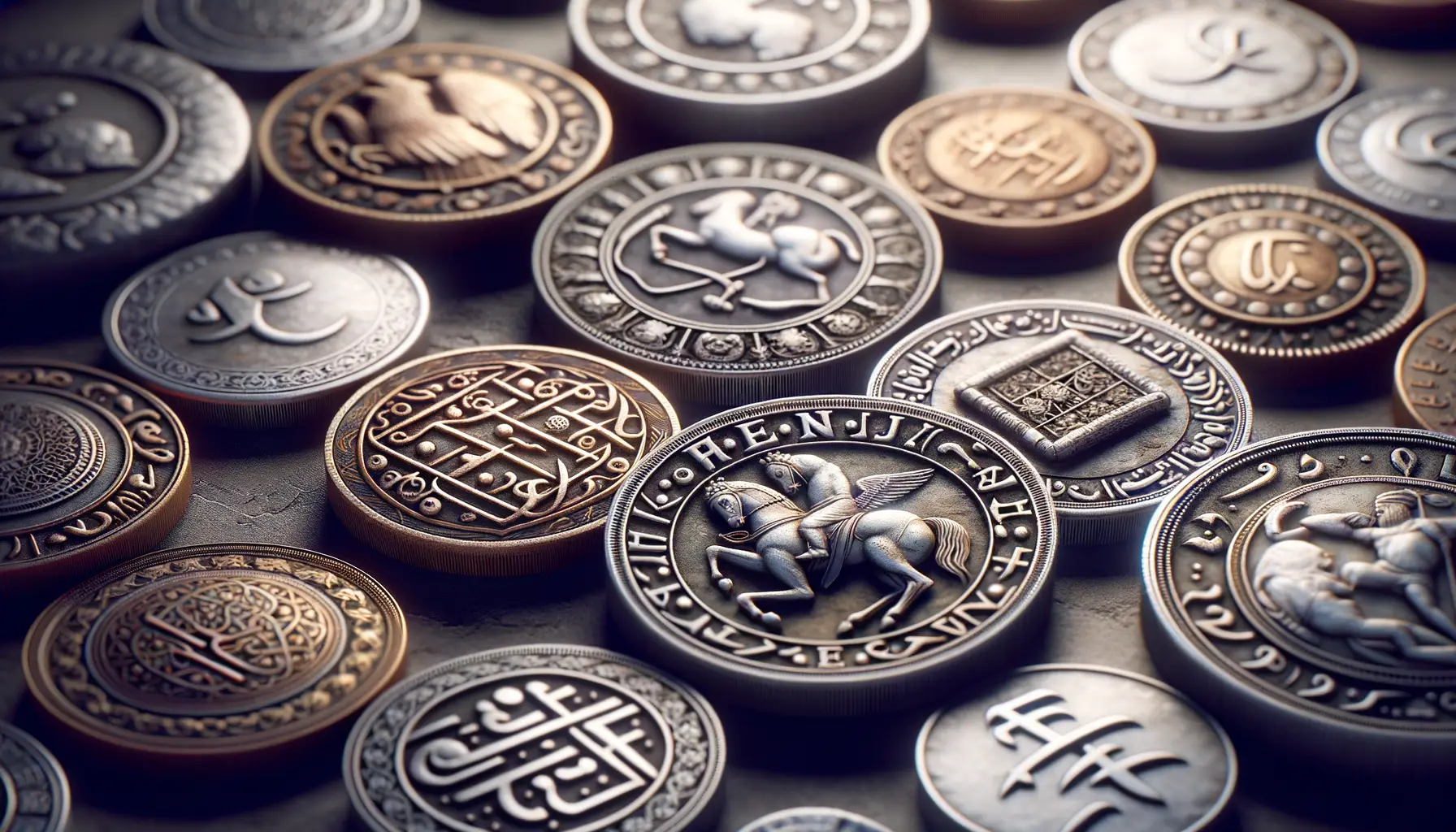
The Unspoken Stories Hidden in Coin Art
Coins, though small and unassuming, carry the weight of nations in their designs. Each line, curve, and symbol whispers a story crafted to be told without words—subtle yet deliberate. Imagine holding a coin from ancient Rome: the profile of an emperor gazes boldly ahead, encircled by Latin inscriptions proclaiming his divinity. This isn’t just art; it’s a message of power.
Symbols on coins are masterfully chosen. Why? Because they’re seen by millions daily, slipping through hands like miniature billboards for empires. Consider these examples:
- A crowned lion roaring on Dutch guilders during wartime—a clear call to courage and resilience.
- The olive branch on American coins—speaking softly of peace but paired with swords in case that peace is threatened.
How Symbols Shape Beliefs and Loyalties
A coin’s design is rarely neutral. When Nazi Germany emblazoned swastikas on its Reichsmarks, it wasn’t just branding; it was domination, injecting ideology into something as mundane as everyday transactions. Similarly, rulers across centuries used their own faces, not unlike modern selfies on steroids, to enforce loyalty. You couldn’t escape their gaze—not even while buying bread.
Coins may be cold metal, but their designs burn with intent. They’re like tiny propaganda posters you can jingle in your pocket.
Notable Examples of Political Propaganda on Coins
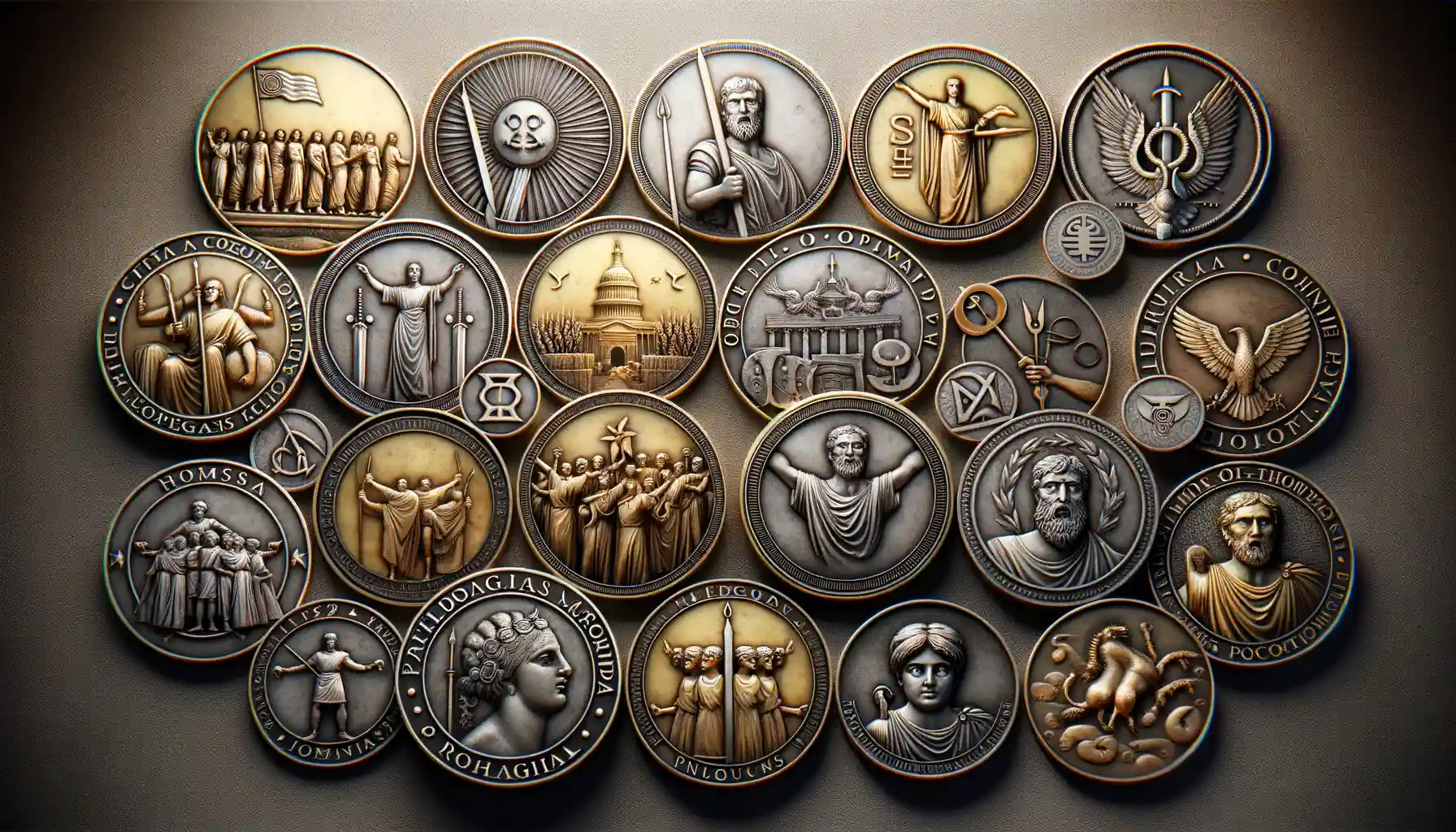
The Ancient World’s Coin Campaigns
Coins have long been the perfect billboards for rulers hungry to cement their power. Take the Roman Empire, for example—a world where every coin screamed a political message. One of the most famous examples? The silver denarius of **Julius Caesar**, minted in 44 BCE. This wasn’t just currency; it was a declaration of divine ambition. It boldly featured Caesar’s portrait and proclaimed him as a god-like dictator. Imagine holding that coin in your hand—a tiny yet blatant reminder of who held sway over life and death.
Another striking case is found in ancient Greece, where the **Athenian tetradrachm** became an emblem of democracy’s power. Adorned with Athena and her sacred owl, these coins weren’t just about trade; they radiated national pride. They symbolized Athens’ might and its intellectual dominance in the ancient world.
A Few Coins That Made Revolutionaries and Dictators Smile
Impact of Coins on Public Perception and National Identity

The Emotional Power of a Coin’s Design
Coins might sit quietly in your pocket, but their designs whisper stories—stories that shape how we see ourselves and the nations we live in. These tiny metallic canvases are far more than just tools for trade. They carry messages about identity, pride, and belonging. Think about it: how often do you handle a coin without even noticing its intricate details? Yet, those designs—whether it’s an eagle soaring across the sky or the face of a revolutionary leader—are powerful symbols shaping public perception.
For instance, during the French Revolution, coinage displayed the image of Lady Liberty. This wasn’t just art; it was a deliberate attempt to redefine what it meant to be French. Coins like these connect people to larger narratives.
- They reinforce shared values: A common design can remind citizens of unity.
- They immortalize key figures: Leaders on coins become icons of power and progress.
- They serve as cultural markers: Designs celebrate traditions, victories, and ideals.
A Mirror Reflecting National Pride
Take a closer look at your own country’s coins. What do they tell you? A mountain peak might evoke natural beauty, while a historic monument rooted in struggle speaks volumes about resilience. Coins act like tiny mirrors, reflecting the essence of a nation back to its people.
Consider the introduction of the Euro: it symbolized unity across diverse cultures, fostering a sense of collective European identity. At the same time, each country retained a personalized design on one side—because shared identity doesn’t mean sacrificing individuality. Isn’t that beautiful?
Coins teach us that they’re not mere currency. They’re storytellers, history books, and national flags rolled into one gleaming surface.
Modern Implications of Political Symbols on Currency
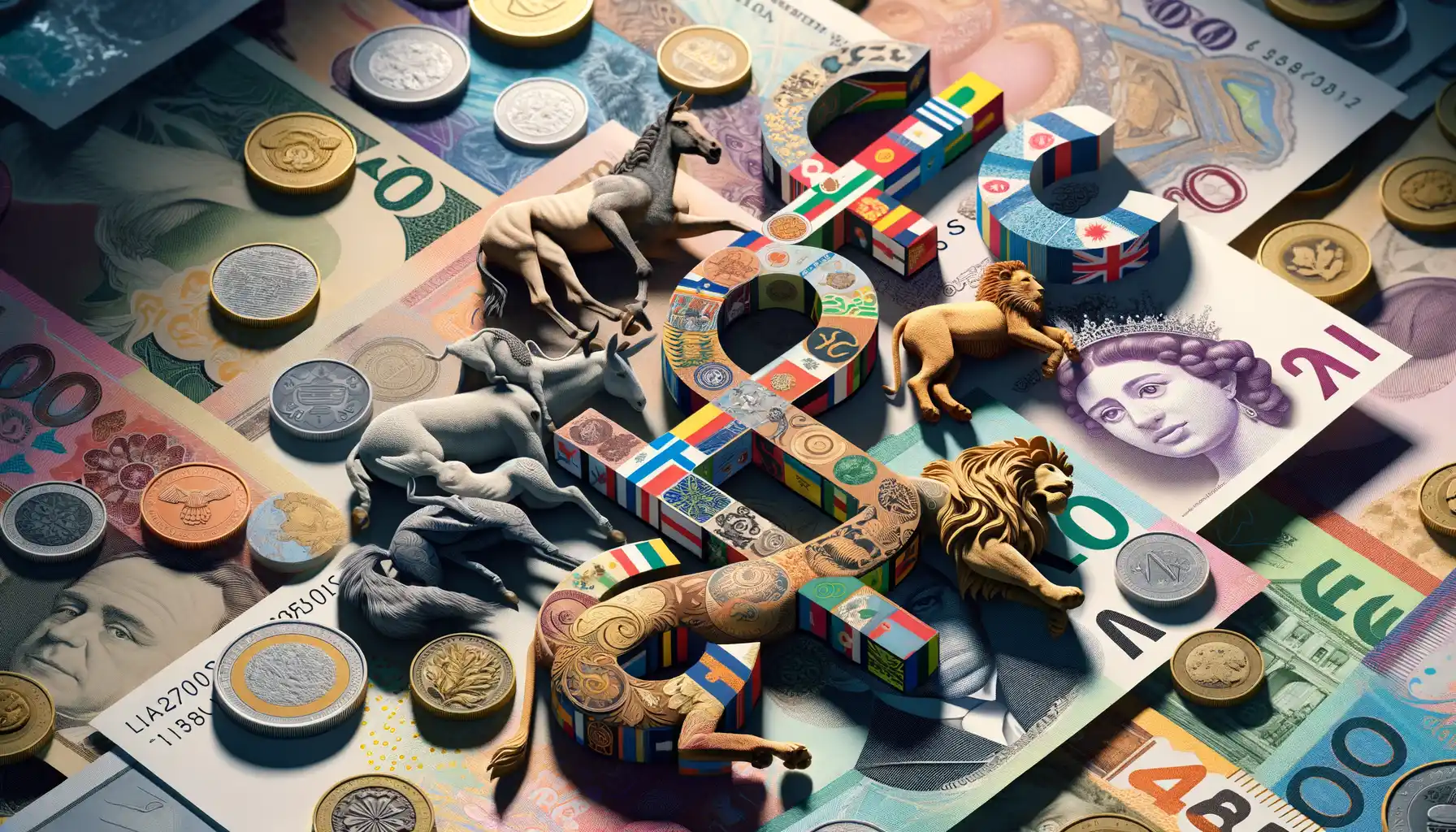
The Power of Symbols in the Digital Age
Imagine pulling a crisp note or a shiny coin from your pocket and realizing it’s more than just money. It’s a message—a quiet, shimmering declaration of power, values, or even protest. In today’s globally connected world, the symbols we see on currency are no longer confined to their issuing nations. Their meanings ripple across borders, magnified through viral tweets, Instagram posts, and digital forums.
Take, for example, the surge in coins featuring environmental motifs—trees, rivers, even endangered species. At first glance, they may seem innocent, but aren’t these designs nudging us to notice climate change? A subtle prod to question where our governments stand on critical issues? It’s political messaging cloaked in beauty. And then there’s the rise of commemorative coins, marking movements like gender equality or celebrating minority communities. They aren’t just souvenirs; they’re deliberate choices that reflect cultural alignments.
- A rainbow flag depicted on a coin speaks to inclusivity in some countries, while causing controversy in others.
- A leader’s face on a new banknote might solidify their legacy—or spark debate about authoritarian control.
Currency has become a battlefield of ideas, coded with meaning for those who care to look closely.

